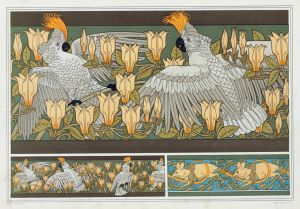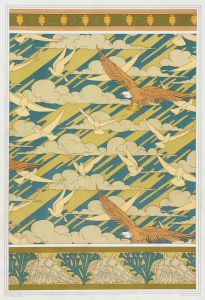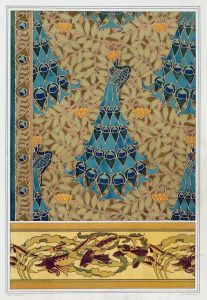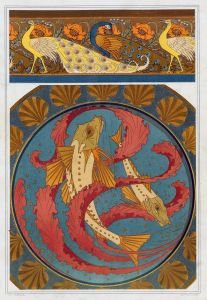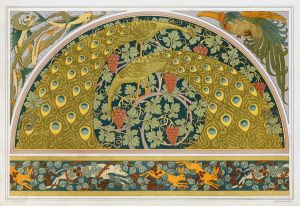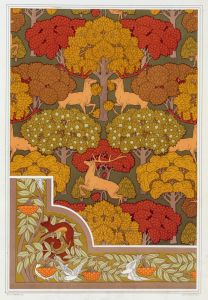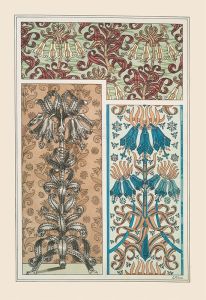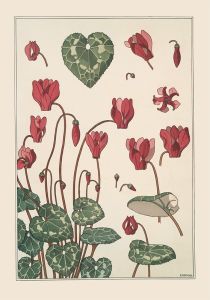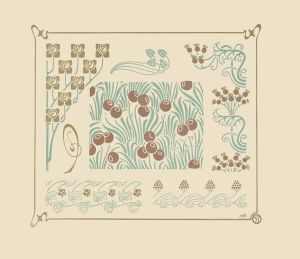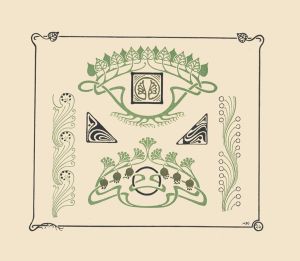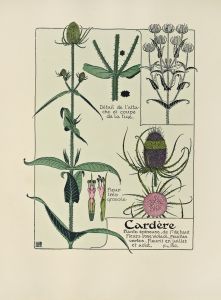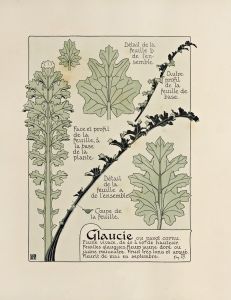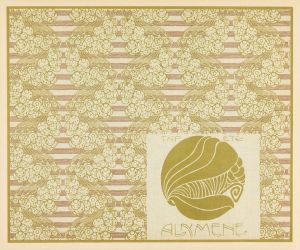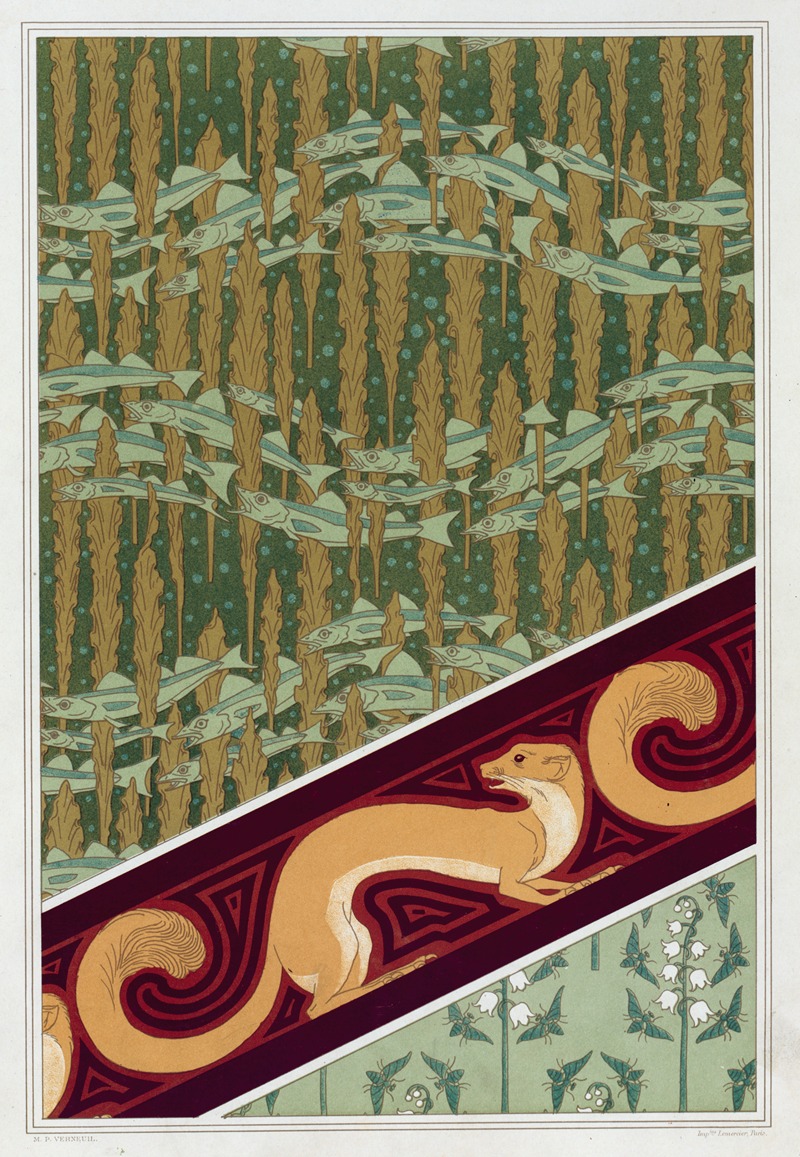
Merlans et algues, papier peint. Mouches et muguet, étoffe de soie. Hermine vulgaire, bordure.
A hand-painted replica of Maurice Pillard Verneuil’s masterpiece Merlans et algues, papier peint. Mouches et muguet, étoffe de soie. Hermine vulgaire, bordure., meticulously crafted by professional artists to capture the true essence of the original. Each piece is created with museum-quality canvas and rare mineral pigments, carefully painted by experienced artists with delicate brushstrokes and rich, layered colors to perfectly recreate the texture of the original artwork. Unlike machine-printed reproductions, this hand-painted version brings the painting to life, infused with the artist’s emotions and skill in every stroke. Whether for personal collection or home decoration, it instantly elevates the artistic atmosphere of any space.
Maurice Pillard Verneuil was a notable French artist and designer, recognized for his contributions to the Art Nouveau movement. Born in 1869, Verneuil was known for his innovative use of natural forms and motifs, which he often incorporated into his designs for wallpapers, textiles, and other decorative arts. His works are characterized by their intricate patterns and vibrant colors, reflecting the Art Nouveau style's emphasis on organic forms and elaborate ornamentation.
One of Verneuil's notable works is "Merlans et algues, papier peint. Mouches et muguet, étoffe de soie. Hermine vulgaire, bordure." This piece exemplifies his skill in combining different elements of nature into cohesive decorative designs. The title itself suggests a variety of motifs: "Merlans et algues" refers to whiting fish and seaweed, "papier peint" indicates wallpaper, "Mouches et muguet" translates to flies and lily of the valley, and "étoffe de soie" means silk fabric. "Hermine vulgaire, bordure" refers to the common ermine, used as a border design.
Verneuil's work often drew inspiration from the natural world, and he was particularly adept at translating these elements into stylized, decorative forms. In "Merlans et algues," the depiction of marine life such as fish and seaweed showcases his ability to capture the fluidity and movement of underwater scenes. This design would have been intended for wallpaper, suggesting a setting that brings the tranquility and beauty of the ocean into interior spaces.
The inclusion of "Mouches et muguet" in silk fabric design highlights Verneuil's versatility in working with different materials. The motif of flies and lily of the valley is an interesting juxtaposition, combining the delicate beauty of flowers with the more mundane presence of insects. This reflects the Art Nouveau fascination with both the elegance and the complexity of nature.
The mention of "Hermine vulgaire, bordure" indicates the use of ermine, a motif often associated with luxury and nobility, as a border design. This element would have added a touch of sophistication and refinement to the overall composition, aligning with the Art Nouveau movement's emphasis on elegance and detail.
Verneuil's work was influential in the development of decorative arts during the late 19th and early 20th centuries. His designs were not only aesthetically pleasing but also functional, intended to enhance everyday environments with beauty and style. His ability to blend natural motifs with decorative elements made his work highly sought after in various applications, from interior design to fashion.
Overall, "Merlans et algues, papier peint. Mouches et muguet, étoffe de soie. Hermine vulgaire, bordure." is a testament to Maurice Pillard Verneuil's artistic vision and his contribution to the Art Nouveau movement. His work continues to be appreciated for its creativity, attention to detail, and harmonious integration of nature into art.





